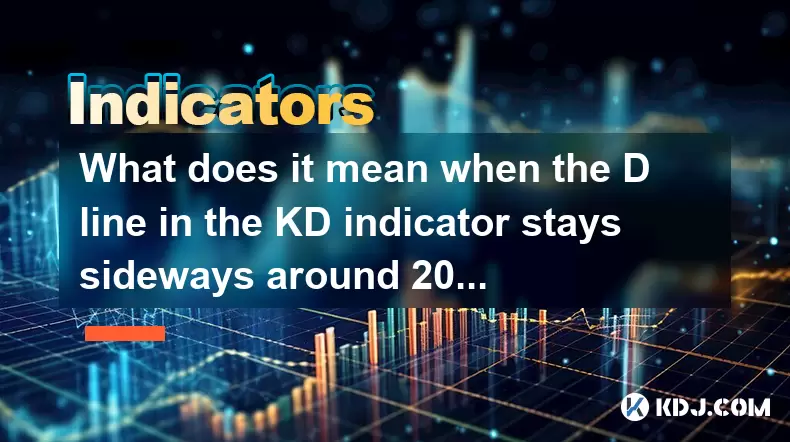-
 Bitcoin
Bitcoin $114800
-0.70% -
 Ethereum
Ethereum $4740
0.44% -
 XRP
XRP $3.018
-0.53% -
 Tether USDt
Tether USDt $0.9998
0.02% -
 BNB
BNB $863.0
-2.82% -
 Solana
Solana $205.2
1.19% -
 USDC
USDC $0.9999
0.00% -
 Dogecoin
Dogecoin $0.2303
-2.43% -
 TRON
TRON $0.3651
1.10% -
 Cardano
Cardano $0.8937
-2.19% -
 Chainlink
Chainlink $25.42
-0.96% -
 Hyperliquid
Hyperliquid $43.50
-0.67% -
 Sui
Sui $3.626
-2.57% -
 Stellar
Stellar $0.4055
-1.60% -
 Ethena USDe
Ethena USDe $1.000
0.01% -
 Bitcoin Cash
Bitcoin Cash $594.8
1.30% -
 Avalanche
Avalanche $25.04
-3.00% -
 Hedera
Hedera $0.2452
-1.68% -
 Litecoin
Litecoin $119.1
-1.96% -
 UNUS SED LEO
UNUS SED LEO $9.596
0.24% -
 Toncoin
Toncoin $3.331
-0.83% -
 Shiba Inu
Shiba Inu $0.00001277
-3.18% -
 Uniswap
Uniswap $10.94
-2.43% -
 Polkadot
Polkadot $4.044
-2.07% -
 Dai
Dai $0.0000
0.01% -
 Bitget Token
Bitget Token $4.670
-1.72% -
 Cronos
Cronos $0.1568
1.20% -
 Aave
Aave $346.1
-1.00% -
 Monero
Monero $269.5
0.15% -
 Ethena
Ethena $0.6950
-6.51%
What does it mean when the D line in the KD indicator stays sideways around 20 for a long time?
When the %D line of the KD indicator moves sideways around 20, it signals stalled downside momentum and potential consolidation after a downtrend, not an immediate reversal—traders should watch for volume shifts, bullish candlestick patterns, and confirmatory signals from RSI or MACD before acting, as premature entries can lead to losses in prolonged bear markets.
Aug 12, 2025 at 12:00 am

Understanding the KD Indicator and Its Components
The KD indicator, also known as the Stochastic Oscillator, is a momentum-based technical analysis tool widely used in cryptocurrency trading to identify overbought and oversold conditions. It consists of two lines: the %K line (fast line) and the %D line (slow line). The %K line reflects the current closing price relative to the price range over a specific period, typically 14 candles. The %D line is a moving average of the %K line, usually calculated over 3 periods, which smooths out fluctuations and provides a clearer signal.
When analyzing price movements in volatile markets like cryptocurrencies, traders rely on the interaction between these two lines. A crossover of the %K line above the %D line is often interpreted as a bullish signal, while a crossover below suggests bearish momentum. However, when the %D line remains flat or moves sideways around the 20 level, it indicates a unique market condition that requires deeper interpretation.
Significance of the 20 Level in the KD Indicator
The 20 level in the KD indicator is widely recognized as the oversold threshold. When the %D line drops below 20, it suggests that the asset may be oversold, meaning selling pressure has pushed prices down to potentially unsustainable levels. However, when the %D line stays sideways around 20, it doesn't necessarily mean an immediate reversal is imminent. Instead, it signals that the market is in a prolonged downtrend with sustained selling pressure, but momentum is no longer accelerating downward.
This sideways movement indicates that downward momentum has stalled, yet buyers have not yet gained enough strength to push prices higher. In cryptocurrency markets, where sentiment can shift rapidly due to news or macroeconomic factors, this condition often reflects a consolidation phase after a sharp decline. Traders should not interpret this as a buy signal automatically, but rather as a sign that the selling exhaustion may be nearing completion.
Interpreting Prolonged Sideways Movement of the D Line Near 20
When the %D line remains flat near 20 for an extended period, it suggests that the price is trapped in a narrow range following a downtrend. This behavior is common in cryptocurrencies experiencing low volatility after a dump, where neither bulls nor bears are in control. Key implications include:
- Selling pressure has diminished, but buying interest is still weak.
- The market may be building a base for a potential reversal.
- There is a risk of a false breakout if volume remains low.
- Bearish sentiment persists, but momentum is no longer increasing.
This condition often precedes a significant move, either upward or downward, depending on subsequent price action and volume. Traders should monitor for divergences between price and the KD indicator. For example, if the price makes a new low but the %D line fails to go below 20, this bullish divergence could signal an upcoming reversal.
How to Respond: Practical Trading Strategy
When the %D line stays sideways around 20, traders should adopt a cautious and structured approach. The following steps can help assess the situation and prepare for potential opportunities:
- Confirm with volume analysis: Check whether trading volume is decreasing during the sideways phase. Low volume suggests lack of conviction, while rising volume on upward moves may indicate accumulation.
- Watch for bullish candlestick patterns: Look for formations like hammer, bullish engulfing, or morning star near key support levels.
- Use additional indicators for confirmation: Combine the KD indicator with tools like RSI, MACD, or moving averages. For instance, if RSI also shows a bullish divergence, the signal strengthens.
- Set conditional entry points: Define a trigger, such as a close above the recent swing high or a %K line crossing above the %D line while both are below 20.
- Place stop-loss orders: If entering a long position, place a stop-loss just below the lowest low during the sideways phase to manage risk.
This strategy avoids premature entries and ensures alignment with broader market structure.
Common Misinterpretations and Risks
Many traders misinterpret a sideways %D line near 20 as an automatic buy signal, which can lead to losses. In strong downtrends, the KD indicator can remain oversold for extended periods. Cryptocurrencies like Bitcoin or altcoins may continue declining despite the indicator being near 20, especially during macro sell-offs or negative news cycles.
Another risk is ignoring the broader trend. If the price is below a key moving average like the 200-day EMA, the sideways %D line may simply reflect a bear market rally rather than a reversal. Additionally, choppy price action in low-liquidity altcoins can generate false signals, making the KD indicator less reliable without volume confirmation.
Traders must also avoid relying solely on the KD indicator. It is a lagging indicator, meaning it reflects past price action. Combining it with price action analysis and support/resistance levels increases accuracy.
FAQs
Q: Can the D line stay near 20 even if the price is rising slightly?
Yes. If the price consolidates with small upward wicks but fails to break higher, the %D line can remain near 20. This reflects weak upward momentum and suggests the rally lacks strength.
Q: How long is considered "a long time" for the D line to stay sideways around 20?
There is no fixed duration, but in daily charts, 3 to 5 consecutive days of sideways movement below 25 is significant. On 4-hour charts, 8 to 12 candles in this zone may indicate consolidation.
Q: Should I exit a short position if the D line goes flat near 20?
Not necessarily. A flat %D line near 20 suggests weakening momentum, but it doesn't confirm a reversal. Consider tightening stop-loss or taking partial profits, but wait for a confirmed bullish breakout before fully exiting.
Q: Does this pattern work the same across all cryptocurrencies?
The behavior is similar, but highly volatile altcoins may show more false signals due to low liquidity. Major coins like BTC or ETH tend to produce more reliable KD patterns due to stronger market participation.
Disclaimer:info@kdj.com
The information provided is not trading advice. kdj.com does not assume any responsibility for any investments made based on the information provided in this article. Cryptocurrencies are highly volatile and it is highly recommended that you invest with caution after thorough research!
If you believe that the content used on this website infringes your copyright, please contact us immediately (info@kdj.com) and we will delete it promptly.
- Crypto Crossroads: Dogecoin, Stellar, and the Search for 2025's Top Coin
- 2025-08-24 19:25:32
- Bitcoin Price Swings, BTC News & Remittix: What's Hot Now?
- 2025-08-24 18:45:35
- Cryptos, Market Cap, 2025 Potential: Spotting the Next Big Thing
- 2025-08-24 16:45:35
- Shiba Inu vs. Layer Brett: Price Prediction and the Meme Coin Evolution
- 2025-08-24 17:05:29
- Dogecoin Price Prediction: Will DOGE Bark or Bite?
- 2025-08-24 17:45:26
- XRP Price: Analyst Prediction of $7-$8 in Few Weeks?
- 2025-08-24 17:45:26
Related knowledge

What does it mean when the +DI and -DI cross frequently in the DMI indicator but the ADX is flattening?
Aug 11,2025 at 03:15am
Understanding the DMI Indicator ComponentsThe Directional Movement Index (DMI) is a technical analysis tool composed of three lines: the +DI (Positive...

What does the sudden appearance of a "dark cloud cover" candlestick pattern during an uptrend indicate?
Aug 13,2025 at 11:35am
Understanding the 'Dark Cloud Cover' Candlestick PatternThe dark cloud cover is a bearish reversal pattern in technical analysis that typically appear...

What does it mean when the moving average, MACD, and RSI all send buy signals simultaneously?
Aug 11,2025 at 01:42pm
Understanding the Convergence of Technical IndicatorsWhen the moving average, MACD, and RSI all generate buy signals at the same time, traders interpr...

What does it mean when both the KDJ indicator and the RSI show overbought signals simultaneously?
Aug 13,2025 at 11:35am
Understanding the KDJ Indicator in Cryptocurrency TradingThe KDJ indicator is a momentum oscillator derived from the Stochastic Oscillator, widely use...

What does it mean when the price is trading above the SAR indicator but the red dots are densely packed?
Aug 09,2025 at 11:49pm
Understanding the SAR Indicator and Its Visual SignalsThe SAR (Parabolic Stop and Reverse) indicator is a technical analysis tool used primarily to de...

What does it mean when the candlestick chart forms a "Morning Star" but trading volume is sluggish?
Aug 12,2025 at 06:28pm
Understanding the Morning Star Candlestick PatternThe Morning Star is a three-candle bullish reversal pattern commonly observed in cryptocurrency pric...

What does it mean when the +DI and -DI cross frequently in the DMI indicator but the ADX is flattening?
Aug 11,2025 at 03:15am
Understanding the DMI Indicator ComponentsThe Directional Movement Index (DMI) is a technical analysis tool composed of three lines: the +DI (Positive...

What does the sudden appearance of a "dark cloud cover" candlestick pattern during an uptrend indicate?
Aug 13,2025 at 11:35am
Understanding the 'Dark Cloud Cover' Candlestick PatternThe dark cloud cover is a bearish reversal pattern in technical analysis that typically appear...

What does it mean when the moving average, MACD, and RSI all send buy signals simultaneously?
Aug 11,2025 at 01:42pm
Understanding the Convergence of Technical IndicatorsWhen the moving average, MACD, and RSI all generate buy signals at the same time, traders interpr...

What does it mean when both the KDJ indicator and the RSI show overbought signals simultaneously?
Aug 13,2025 at 11:35am
Understanding the KDJ Indicator in Cryptocurrency TradingThe KDJ indicator is a momentum oscillator derived from the Stochastic Oscillator, widely use...

What does it mean when the price is trading above the SAR indicator but the red dots are densely packed?
Aug 09,2025 at 11:49pm
Understanding the SAR Indicator and Its Visual SignalsThe SAR (Parabolic Stop and Reverse) indicator is a technical analysis tool used primarily to de...

What does it mean when the candlestick chart forms a "Morning Star" but trading volume is sluggish?
Aug 12,2025 at 06:28pm
Understanding the Morning Star Candlestick PatternThe Morning Star is a three-candle bullish reversal pattern commonly observed in cryptocurrency pric...
See all articles

























































































